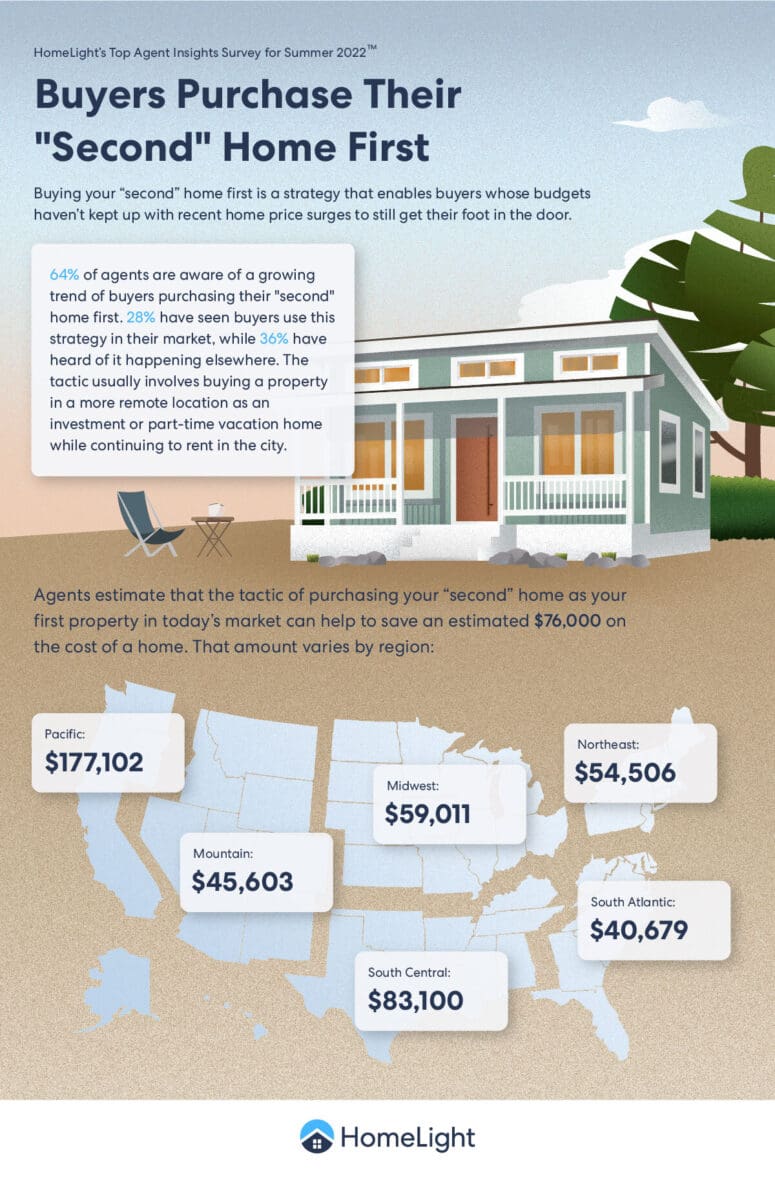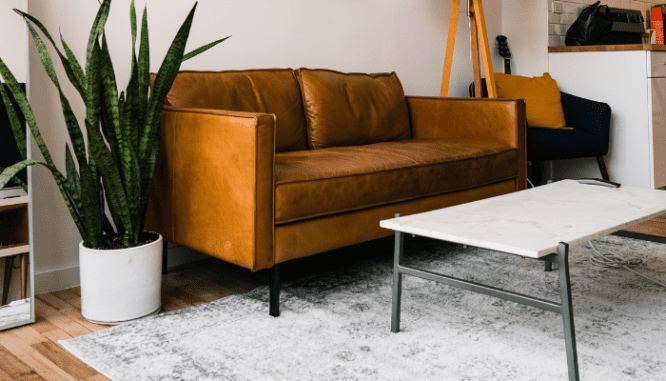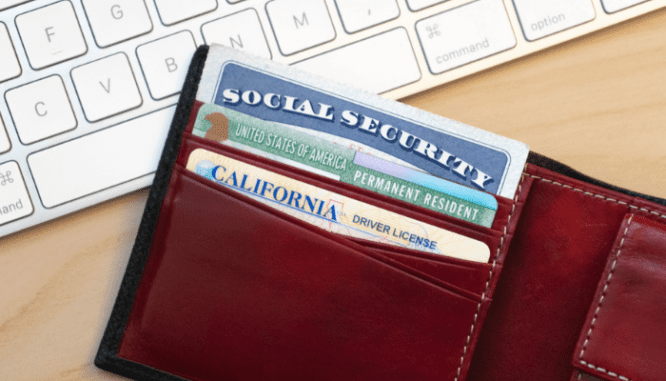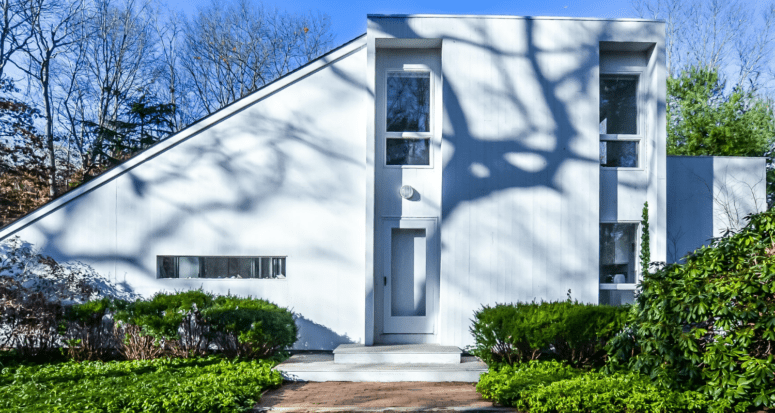Permanent Vacation: 4 Steps to Moving Into a Vacation Home
- Published on
- 5 min read
-
 Melissa Holtje Contributing AuthorClose
Melissa Holtje Contributing AuthorClose Melissa Holtje Contributing Author
Melissa Holtje Contributing AuthorMelissa enjoys using her experience as a house flipper, investment buyer, and waterfront home owner to help buyers and sellers thrive in the housing market. When not scouting real estate, you’ll most likely find her at the beach.
You’re sitting in your office on a weekday afternoon looking out the window at a sea of concrete and random pigeons. You think to yourself how much you’d welcome a change of scenery and how nice it would be to be able to, instead, look up from your laptop and gaze upon the beautiful trees that surround your vacation home. Or the serene lake view you would enjoy from your deck. COVID has changed the workplace landscape significantly and what once may have been a workplace dream could now become reality. After all, what’s keeping you from making your vacation home your primary home?
Due to pandemic-related concerns and increased remote work opportunities, some homeowners are ditching their places in the city or suburbs for an everyday vacation vibe in their second home. In fact, a Gallup poll indicates that up to 70% of employees are now in a work-from-home job situation, and many of those employees are reimagining work from home as work from anywhere.
Michael Slate, a preferred real estate agent in Palm Springs, California, says, “I don’t think anything could be easier than moving into a vacation home on a full-time basis.” He notes that a vacation home, with its fabulous views and relaxing amenities, often provides a fantastic living environment, especially for shelter-in-place or social-distancing situations.
If you’re thinking about making your second home your primary home — temporarily or permanently — there are a number of considerations to keep in mind before you jump in.
 Mortgage considerations
Mortgage considerations
Lenders usually classify homes into three different categories: primary or principal residence, vacation or second home, and investment property.
Interest rates and loan-to-value ratios (amounts required as a down payment) for each type of home differ because lenders determine a different assumption of risk based on the owner’s use of the property. Because of this, mortgage loans for homes used as a primary residence generally have better rates than loans for vacation homes and investment properties.
Primary residence
Lenders define a primary residence as the place where you spend the majority of the year. A lender often will ask you to prove your primary residence within 60 days of purchase by providing copies of government-issued identification or tax returns.
Some lenders also want to see that your primary residence is within a reasonable distance from your place of employment, although these standards are changing with the increase in remote work.
Loans on primary residences are the easiest to obtain and maintain. When you’re living in a house as opposed to renting out or visiting occasionally, lenders figure you have more incentive to continue making payments on the loan. It’s a lower risk for them, and thus a better deal for you. Buyers may be able to secure a loan with a down payment as low as 3% and an interest rate as low as 2.5% for a primary residence, as of December 2020.
Vacation home/secondary residence
A vacation home or secondary residence refers to a home that you use only sometimes during the year, often for recreational purposes.
For a home to qualify as a vacation home, you need to live at the property for part of the year and have exclusive control over it. Some lenders may also require a minimum distance between your vacation home and your primary residence (for example, more than 50 miles) and might look at whether you have a rental, timeshare, or property management contract. If that’s the case, it would classify as an investment property, rather than a secondary residence.
Lenders consider loans on vacation homes to be a higher risk because borrowers are more likely to default on a loan for a secondary residence if they fall on hard times. For that reason, lenders will usually ask for at least 10% to 20% of the purchase price as a down payment, require the borrower to have two months proof of cash or liquid reserves in savings, and charge slightly higher interest rates than those available for a primary mortgage loan. As of December 2020, the low end of interest rates for secondary residences was 2.63%.
Refinancing your vacation home as a primary residence
The decision to refinance should be weighed on a case-by-case basis. Since you’ve already made the down payment and proved your cash reserves, the difference really comes down to whether you can get an interest rate that’s low enough to offset the closing costs of refinancing the loan.
Slate also calls out the benefit of refinancing to help offset moving expenses.
“Even if you just refinance and skip those two months’ mortgage payments while they facilitate everything on the back end, that never hurts anything.”
Since each situation is unique, you should make sure to talk with your lender for more guidance about your personal mortgage situation. But as you consider making your vacation home your primary residence, there are several factors to consider with regard to your mortgage.
- Are you going to sell your current primary residence? If so, you may be able to use the profits to pay off or significantly pay down your vacation home mortgage.
- Will you be renting your current primary residence? If so, you likely have an occupancy clause in your mortgage contract that requires you to notify your lender of your rental intentions. Ask about any potential impact to your current loan.
- How much can you save by refinancing? As mentioned above, there may not be a huge difference in interest rates between primary and secondary homes. But with primary home interest rates being so low right now, it could be possible for you to save hundreds of dollars each month by refinancing, depending upon what rate you hold and what rate you can get.
In 2019, average interest rates were 3.74% for a 30-year fixed rate home loan. In December 2020, the average mortgage interest rate was 2.71%, which would gross a savings of nearly $100 per month on a $200,000 loan. With many lenders waiving some or all of the closing fees to refinance, you may come out on top in this current low-interest market. Again, everyone’s loan situation is different, so run the numbers with your lender to see if refinancing is right for you.
Insurance considerations
As you may be aware, insuring a vacation home is quite costly when compared with insuring a primary residence. Insurance companies consider a vacation home to be a greater risk due to the fact that it remains uninhabited for long periods of time and, as a result, is more susceptible to theft or damage.
Vacation home insurance policies are typically two to three times more expensive than primary home insurance policies. Although influential factors vary greatly, a vacation home policy might run anywhere from $2,000 to $3,000 annually, whereas the average primary home insurance policy costs around $1,200.
Talk to your insurance agent about reclassifying your vacation home as your primary residence for insurance purposes — you could end up saving thousands!
But keep in mind, if you won’t be selling your current primary residence, insurance costs could go up significantly on that property after you transition.
Tax considerations
As with anything involving taxes, consulting with your tax professionals to determine what is best for you and your current situation is key. The following ideas can help guide the conversation to see if your vacation home can benefit you from a tax perspective.
Changing your vacation home into a primary residence can also be a great way to save on capital gains taxes when you eventually sell the property. Profits made on the sale of a second home are usually subject to capital gains tax up to 20%, depending on your tax bracket. But as a general rule, when you sell a primary residence, you do not have to pay capital gains tax on a profit of $250,000 or less ($500,000 for married couples filing jointly).
You must live in the house for at least two of the five years preceding the sale for it to qualify as a primary residence sale — a rule that could work in your favor if you move to your vacation home!
One important thing to keep in mind: There’s a catch if your home was ever classified as an investment property. If you’ve been renting the home out, you could be on the hook for a portion of capital gains tax based on how much time the property was a rental. You may also be charged a flat 25% depreciation recapture tax for the year(s) that you claimed depreciation on your income taxes. Be sure to discuss this with your accountant if you’ve offered the house as a rental.
In some states, changing your vacation home into your primary residence can also save you money on property taxes. For example, in Florida, homeowners are eligible for a homestead assessment exemption of up to $50,000 if they can prove the property is their primary residence.

Lifestyle considerations
Changing a house from a hangout zone to a real-life home isn’t as simple as you might think. With work, school, and transportation, your vacation home will need to accommodate more than sunscreen and skis now.
Furnishings
Considering you can’t really relax in an unfurnished home, we’re going to assume you’ve got some furniture and decor already waiting for you in your vacation home. But sometimes vacation home furnishings are the equivalent of hand-me-downs — castoffs from either your primary residence or from the previous owners — because people don’t want to put “good” furniture in something that might be rented out.
Moving into your vacation home full time changes the dynamic. You’ll want the things that make you most comfortable for daily life — and you’ll definitely want the “good” mattress!
Assess what furnishings are already in the house, and decide what furniture you plan to bring with you. Make a plan for selling or getting rid of the duplicates so you can create a space that feels like home.
Utilities and appliances
Some remote vacation homes rely on well water, septic systems, and generators. This infrastructure might work fine for a couple weeks at a time, but will it hold up to constant use?
If not, look into your options. Is it possible to run municipal water, sewer, and power lines to your location? Or do you need to invest in any upgrades or additional maintenance?
Likewise, think through the size and functionality of the appliances in your vacation home. An apartment-sized fridge might not have been a problem for a short-term stay, but will you need something larger now? What about heating and cooling — is the system designed to keep you comfortable through every season?
Efficiency upgrades
Before moving into your vacation home, Slate recommends making improvements and upgrades that might have been put off.
For example, installing energy-efficient windows or insulating your attic may not have previously been a priority, but once you start paying utility bills full time, you’ll wish you had them!
Office space
Those intending to work from home will need to think through internet capabilities. After all, shared documents, online conferencing, and connectivity applications form the cornerstone of remote work.
Can your internet handle multiple downloads and run video feeds without glitching? Are you set up for wi-fi that can handle the demands of technology, or will you need to bring a router/booster with you?
You’ll also want to think through the physical office space. If your vacation home doesn’t have a dedicated office, where will you set up your work-from-home hub? How will you achieve the privacy you need to conduct business considering the other people in your home?
Schooling
Remember that a big move can be disruptive to kids, so helping them adjust to their school situation in your vacation home is super important. If your child will be schooling remotely, be sure they have a location and setup that suits their educational needs.
If you plan to transition to a local in-person school, remember that everything will be unfamiliar to you and your child. You probably never noticed bus stop locations while on vacation! Work together to get things in place to help ease the adjustment.
Conveniences
A lack of conveniences can add charm to some vacation home locations. Who wants to shop at big box stores and eat at chain restaurants on vacation, anyway?
But as you imagine life full time in your vacation location, are there any resources that you might miss? How far are you from the nearest grocery store? Do they have the variety that you need?
If your location lacks some of the conveniences you’ve grown accustomed to, consider alternative solutions. An ebook subscription could replace your local library. A meal plan or grocery delivery service could save drive time if your mega-grocer is further away. And your health insurance provider may have a portal for virtual doctor visits or prescription services, which would help for treatment of more common ailments.
Future travel
While no one can predict the future, chances are we’ll resume some amount of travel in the months and years to come. And while your employer may accommodate remote work now, some may shift to a more hybrid model as time goes on.
If you do need to return to your office, does your vacation home location allow you the access that you’ll need to airports or highways? If there’s a longer commute involved, is it manageable?

How to prove primary residence
Making your vacation home into your primary home will require official documentation for all of the reasons above: mortgage, insurance, and taxes. The process differs from state to state, but basically, you’ll need to prove that this home is where you’re spending most of your time now.
Utility bills aren’t enough in most cases. After all, you’ve most likely been paying those already, without living in the home full time. To prove residency, you might also need to change the address on your driver’s license or other government ID.
Additionally, you may need to register to vote in your new precinct and obtain a new voter registration card. Tax forms sent to your vacation-turned-primary home may also qualify, as well as school registration forms for your children. Make sure you’re clear about the requirements in your state.
Slate closes with an excellent reminder for homeowners.
“Nothing’s forever,” he says. “As you transition, you don’t have to do it all perfectly. You can learn things as you go, and you can position yourself for settling in. But then, maybe this is just a two-year plan, and you can watch for what to pivot to next.” Primary doesn’t have to be permanent!
Making a move into your vacation home can have great benefits, both from a personal and financial perspective. If you have questions about how this type of move could impact you, find all the answers you need from one of our HomeLight loan officers or real estate pros.
Header Image Source: (Chastity Cortijo / Unsplash)
